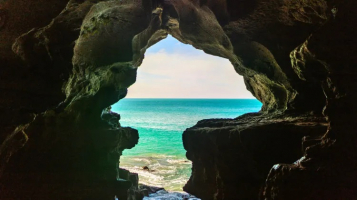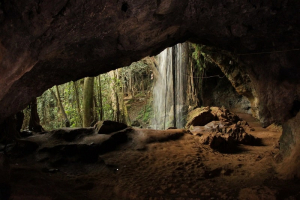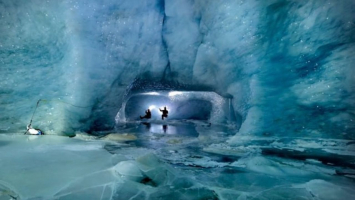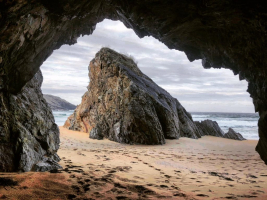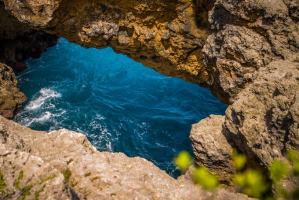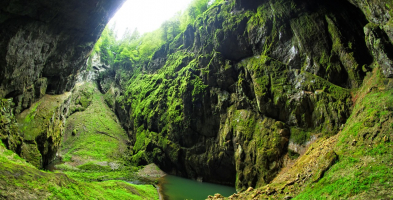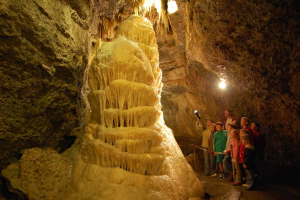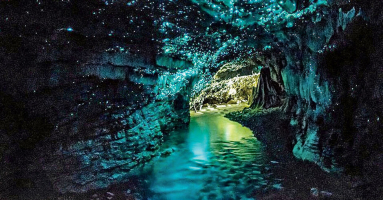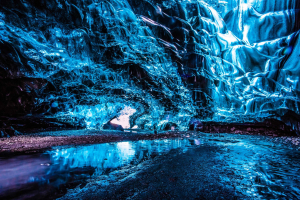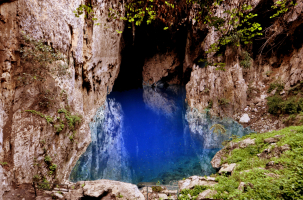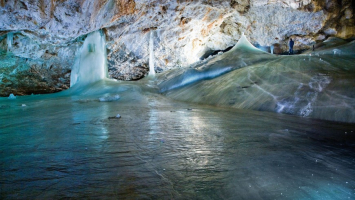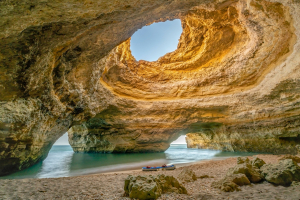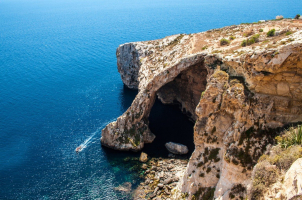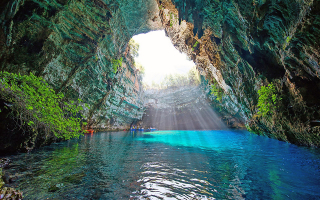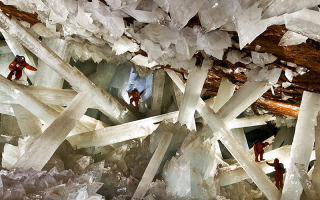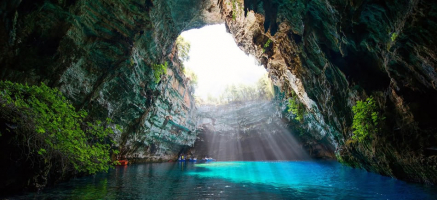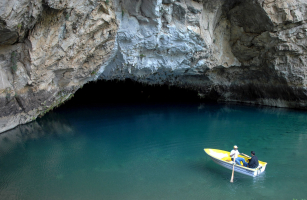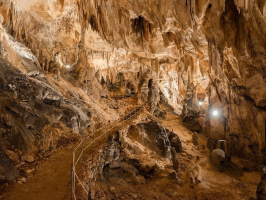Top 5 Most Beautiful Caves in Korea
When people think of Korea natural beauty probably isn’t the first thought in their mind. Despite this, it’s a truly beautiful country with some amazing ... read more...natural highlights. On top of all those, it has some absolutely enormous cave structures. Here are top 5 most beautiful caves in Korea
-
Manjanggul tops the list of the most beautiful caves in Korea. Gimnyeong-ri, Gujwaeup, Jeju City is home to the Manjanggul Lava Tube. It is the world's 12th-longest lava tube[1] and the second-longest on Jeju island, measuring up to 23 meters wide, 30 meters high, and 8.928 kilometers long. [2] Due to its excellent state of preservation despite its age, it is recognized as having great scientific and heritage importance (about 300,000 to 200,000 years ago). Lava stalactites and stalagmites, lava columns, lava flowstone, lava helictites, lava blisters, cave coral, benches, lava rafts, lava bridges, lava shelves, grooved lava striations, and ropy lava all have excellent preservation. The world's largest lava column, measuring 7.6 meters, is among them. There are three entrances, the second of which is open to the public and leads southward.
The most favorable environments for cave life may be found at Entrance No. 3, and there is a lower level main tube between Entrances 1 and 2 where the majority of the living species can be located. The Manjanggul Lava Tube has the most live organisms in the Geomunoreum Lava Tube System, including the Jeju cave-spider. There are at least 30,000 common bent-wing bats in the upper half of Entrance 2, making it the largest colony of bats known to be living in Korea thus far.
Location: Gimnyeong-ri, Gujwaeup, Jeju City

tour.dulichvietnam.com.vn 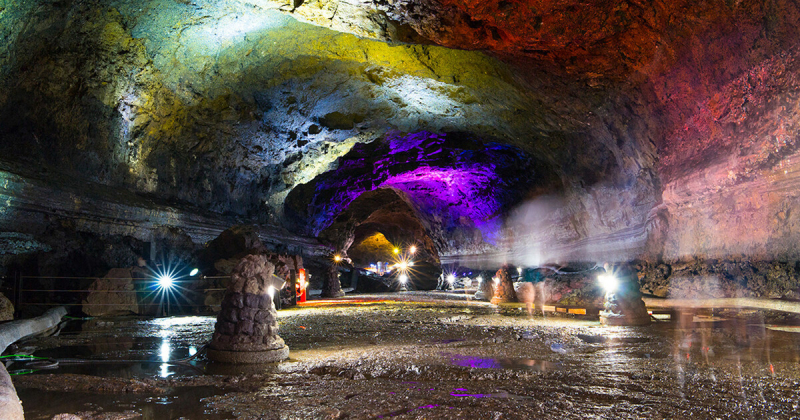
koreainyourhand.vn -
Gosu Cave 2nd on the list of the most beautiful caves in Korea. Gosu Cave (also known as Kosu Cave) is a massive limestone cave near Danyang, North Chungcheong Province, South Korea, that was formed approximately 450 million years ago. It is known as the "subterranean palace" and is one of Korea's most well-known natural caves. The name "Gosu" means "field of tall reeds" and refers to the fact that the area was once covered in tall grasses. Rough stone tools were excavated from the cave's entrance when it was found in the early 1970s, indicating that it was formerly home to prehistoric people.
The cave, which is 1,300 meters (4,264 feet) deep, is home to 25 different insect and animal species. There are about 120 different stalactites and stalagmites here. Some of the formations, such as Lion Rock, Octopus Rock, Eagle Rock, and even the Virgin Mary Rock, resemble animals or human figures. The cave's guardian is reported to be the Lion Rock. Visitors are only allowed to explore up to 1.7 km/5,577 ft of the cave, which has a total length of 5.4 km/17,716 ft. Gosu Cave's main branch stretches about 1,200 meters (3,937 feet). Stalactites, stalagmites, columns, cave coral, cave pearls, cave shields, draperies, and aragonite crystals are among the remarkable speleothems. A sequence of spectacular 10m/33 foot long stalactites may be found in the main chamber.
Location: Danyang, North Chungcheong Province, South Korea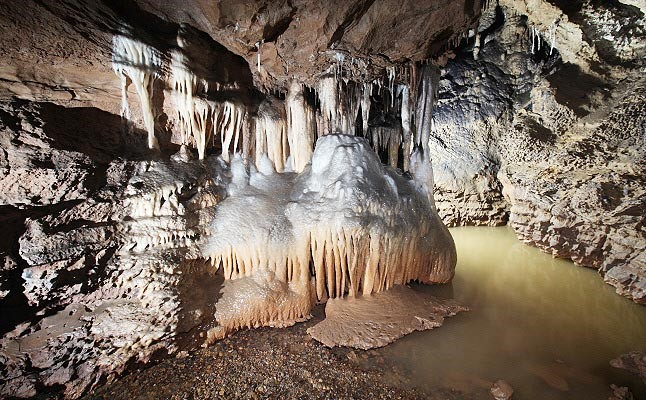
thisiskoreatours.com 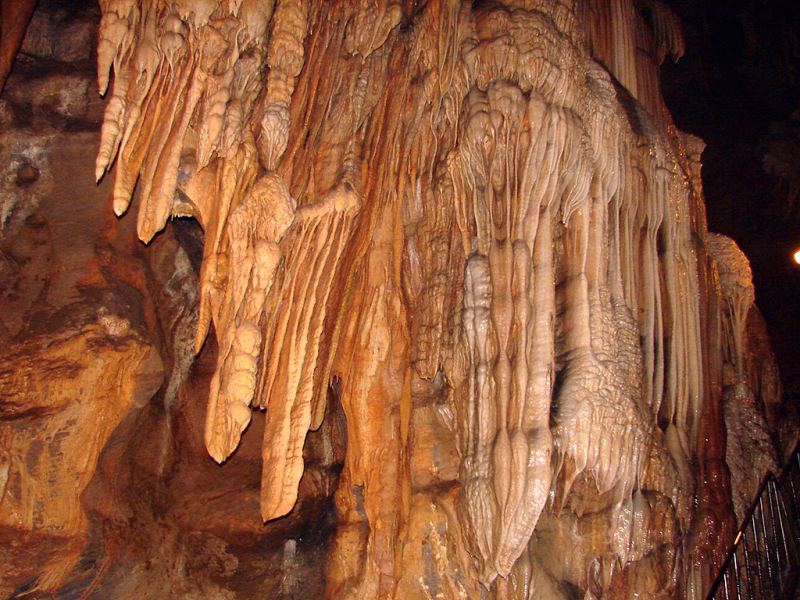
commons.wikimedia.org -
Hwanseon Cave 3rd on the list of the most beautiful caves in Korea. It is a cave in South Korea's Gangwon Province. It is one of Asia's longest limestone caverns, and Korea's largest, with a known length of 6.2 kilometers and a total length of up to 8 kilometers. 6 km, which attracts about 1 million tourists each year. The Korean government agreed to expose Gwaneum Cave, National Monument 178, and its adjoining caves to the public in 1966. In 1997, Hwanseongul was opened to the public.
The cave is 10 meters high and a 30-45 minute uphill trek from the box office to the entrance. It is located in a chain of jagged limestone mountains near Samcheok city. The temperature inside varies between 10° and 14°C. Streams, waterfalls, and ten big lakes flow down the cave walls from various fractures and seeps. Some of the cave's chambers are over 100 meters long, and bridges have been built to connect them. The cave's rock formations have been given several names, however stalactites and stalagmites are rare due to the cave's fast flowing water. Korean thunderstorm Onychodactylus fischeri, spider Allomengea coreana, cave cricket Diestrammena japanica, centipedes Epanerchodus kimi and Antrokoreana gracilipes, moth Apopestes indica, and an amphipod are among the 47 species of fauna found in the cave.
Pseudocrangonyx is a genus of Pseudocrangonyx. The beetle Kurasawatrechus latior is one of four species found alone in Hwanseon Cave. The cave is open all year; it takes one hour to walk through the cave's 1.6 steel passageways, minus the 1.3-kilometer road outside the cave and the 200-meter ascent to and from the entrance.
Location: 800 Hwanseon-ro, Singi-myeon, Samcheok-si, Gangwon-do
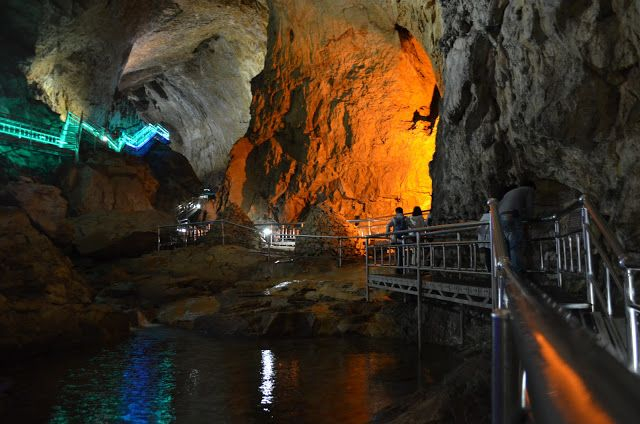
ar.pinterest.com 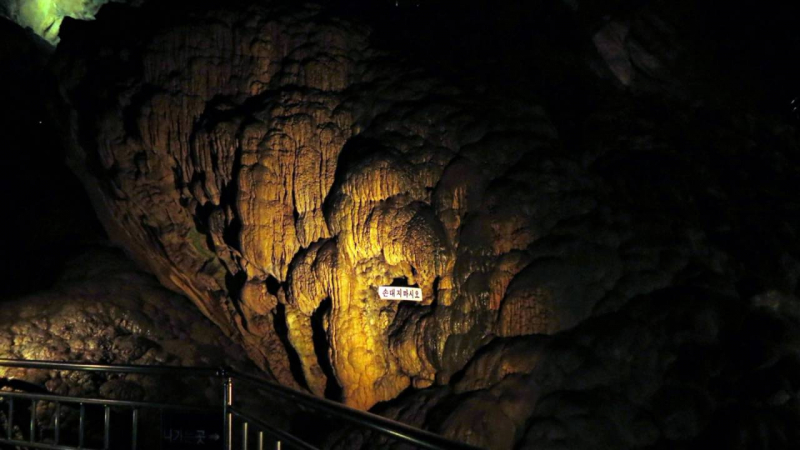
ar.pinterest.com -
Gwangmyeongdonggul Cave is the world's largest themed cave park, with a wide range of cultural and artistic items. It was built in a gold mine that mined gold, silver, and bronze. Wine Cave, as well as Cave Aqua World, Gold Falls, Gold Road, Gold Palace, Horror Experience, Cave Basement World, Underground Lake, the nation's largest dragon sculpture, LED lights, and other attractions, contribute to the excitement of the visit. Every weekend, there will also be a Black Light Performance. While walking around the cave, one can find several healing areas to help one's mind heal.
The cave was used for mining purposes while Korea was under Japanese rule from 1910 to 1945, and it was staffed by forced laborers. The cave complex was reopened for tourism in 2011 and currently includes historical exhibitions as well as aquariums, sculptures, light shows, children's amusements, and other attractions, including an underground vineyard. The cave complex is popular, especially in the summer, because of the cooler underground temperatures, yet it is located in a remote mountainous area. It is easily accessible by automobile, however the closest Seoul Metro station is the Gwangmyeong KTX Station, which is around 2 kilometers away. It was 7.8 kilometers long and 275 meters deep. For 40 years, it sat unused.
Location: Gwangmyeong, Gyeonggi-do, South Korea
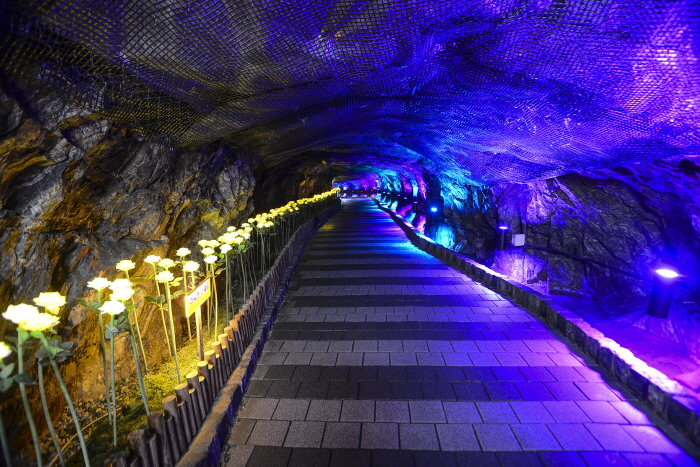
wowkorea-supporters.blogspot.com 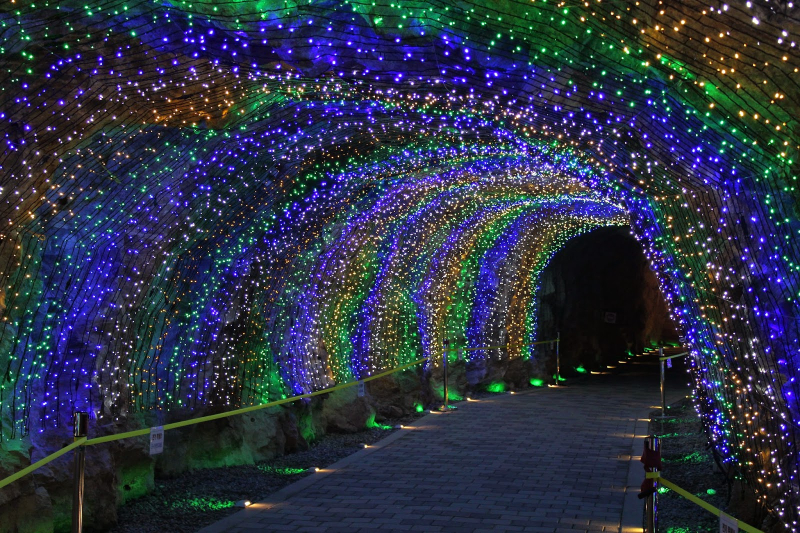
wowkorea-supporters.blogspot.com -
Last on the list of the most beautiful caves in Korea is Ssangyong Cave. Along with Hwanggeumgul Lava Tube, Socheongul Lava Tube, and Manjanggul Lava Tube, Ssangyonggul Cave is one of Jejudo Island's most famous lava tubes. The cave measures around 400 meters in length, 6 meters in width, and 3 meters in height. It was formed 2.5 million years ago by lava from the volcanic eruption of Hallasan Mountain. It's a one-of-a-kind cave with lava and limestone elements, as well as a massive layer of seashells and sand that surrounds it. Due to different cave formations such as stalactites and stalagmites that hang from the ceiling and grow up from the cave's bottom, the cave's interior is both mystical and beautiful.
The cave walls are lime-washed, giving the impression that you're staring at a magnificent cave painting. Many visitors visit the cave in the middle of the summer to escape the heat or in the middle of the winter to enjoy the warmth because the temperature within the cave remains constant at 17°C - 18°C throughout the year. Ssangyonggul Cave has two entrances, and it was given the name Ssangyong (meaning "two dragons" in Korean) because it appears that two dragons entered and exited the cave at the same time. Because the second entrance of Ssangnyonggul Cave is quite close to the end of Hyeopjaegul Lave Tube, scientists believe that Ssangnyonggul Cave and Heopjaegul Lave Tube were formerly one cave. Ssangyonggul Cave was also designated as a Natural Monument.
Location: Jeju City, Bus Terminal, Jeju Island, Mediterranean Garden, Bonsai Garden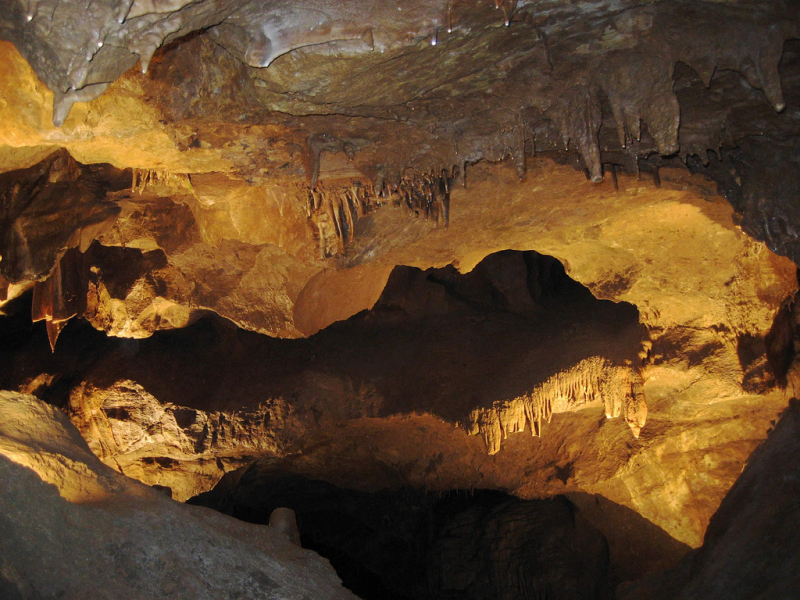
youngpioneertours.com 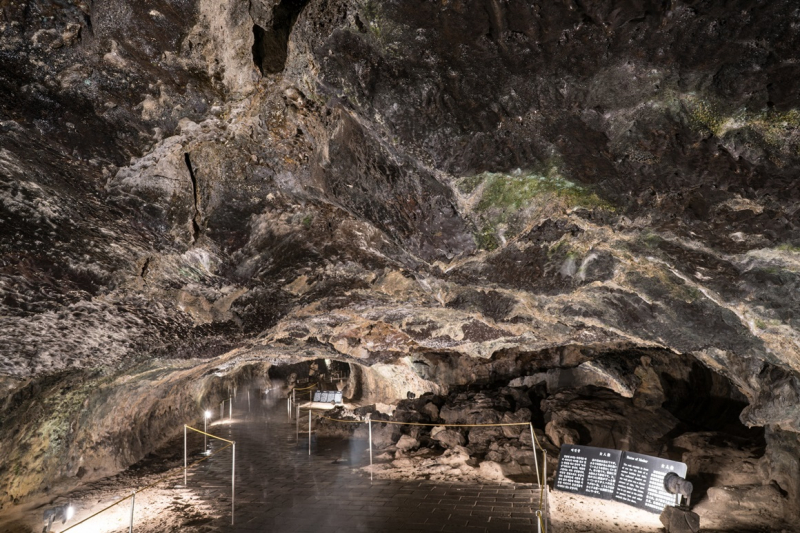
wondermondo.com







